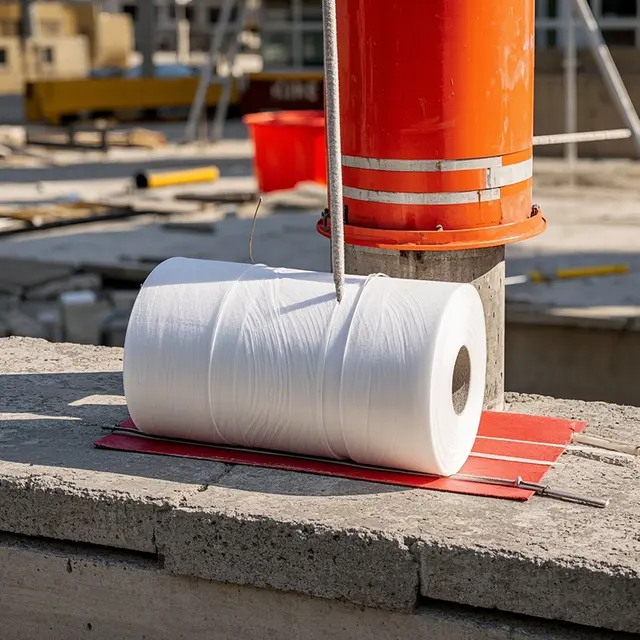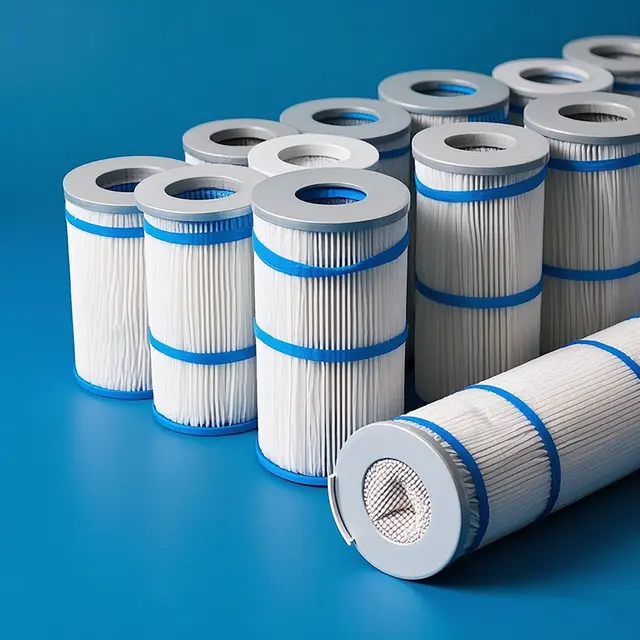- All
- Product Name
- Product Keyword
- Product Model
- Product Summary
- Product Description
- Multi Field Search

Views: 195 Author: Site Editor Publish Time: 2025-07-24 Origin: Site
Coarse filament non-woven fabric is a specialized material engineered from continuous polyester or polypropylene filaments with relatively thick deniers. Unlike fine denier fabrics used in delicate applications, coarse filament fabrics have a more robust and stiffer structure, designed for high-performance industrial and technical use. The fibers are entangled or bonded without weaving, resulting in a fabric that maintains high tensile strength, rigidity, and dimensional stability.
These fabrics are commonly utilized in geotextiles, automotive interiors, filtration media, and reinforcement linings. Their unique structure allows them to endure stress, abrasion, and mechanical manipulation. Given their strength and thermoplastic nature, one recurring question in industrial manufacturing is whether coarse filament non-woven fabrics can be heat pressed—a process widely used for shaping, bonding, or printing on thermoplastic substrates.
Let’s examine the technical feasibility, practical implications, and best practices for heat pressing coarse filament non-woven fabrics.
Heat pressing is a thermal process involving the application of heat and pressure over a specific duration to permanently alter or attach materials. This technique is commonly used in:
Bonding layers of textiles
Laminating fabrics
Embossing surface patterns
Transferring designs or coatings
Thermoforming components
The principle behind heat pressing lies in the thermoplasticity of synthetic polymers. When exposed to a certain temperature, synthetic fibers like polypropylene and polyester soften, allowing them to fuse, deform, or accept external patterns. This is particularly beneficial in non-woven fabric applications, where bonding without stitching is often desirable.
However, the success of this process depends heavily on the fiber’s melting point, density, thickness, and thermal behavior—variables that must be carefully considered when dealing with coarse filament non-woven materials.

Yes, coarse filament non-woven fabric can be heat pressed, provided certain parameters are properly controlled. Since the fabric is typically made of polypropylene or polyester—both of which are thermoplastic materials—it can be reshaped, bonded, or surface-modified using heat and pressure.
Here’s why it’s feasible:
Thermoplastic Fibers: The core polymers used (PP or PET) melt or soften at specific temperatures, allowing thermal bonding or molding.
Structural Integrity: Coarse filaments have high tensile strength, making the fabric resistant to tearing even during thermal manipulation.
Dimensional Control: The stiffness of coarse deniers allows for more defined patterning during heat pressing.
However, due to the thicker fiber size and lower surface area compared to fine denier fibers, coarse filament fabric requires higher temperatures and longer dwell times to achieve effective results.
| Parameter | Recommended Range |
|---|---|
| Temperature | 160–200°C (depending on fiber type) |
| Pressure | 2–4 bar (moderate to high) |
| Dwell Time | 10–30 seconds |
| Cooling Phase | Required for structural stability |
| Pre-treatment | Recommended for even bonding or printing |
Overexposure to heat or excessive pressure can lead to fabric shrinkage, warping, or melting. Therefore, process optimization is critical.
By heat pressing coarse filament non-woven fabric, manufacturers can achieve enhanced inter-fiber bonding, especially in multilayer constructions or laminated assemblies. This strengthens the final product without the need for stitching or adhesives.
The stiffness of coarse fibers allows clear and durable embossing or texturing through heat pressing. This is particularly useful for technical textiles requiring anti-slip surfaces or customized branding.
Thermal processing enables the fabric to take on a predetermined 3D shape, which is valuable in automotive, construction, or packaging applications where form-fit liners are required.
Heat pressing can seal edges or reinforce high-stress zones, preventing fraying and improving the mechanical resilience of the material during application or post-processing.
Despite the many benefits, heat pressing coarse filament non-woven fabric also presents several challenges:
Thicker fibers require more energy to reach the softening point uniformly. This increases energy consumption and demands precise thermal control.
Without calibrated settings, there’s a risk of surface discoloration, melting spots, or warping. Coarse denier fabrics are less forgiving to processing errors than fine denier counterparts.
Standard garment-grade heat presses may not suffice. Industrial-grade equipment with adjustable pressure, temperature zones, and timing controls is often required to handle coarse non-woven substrates effectively.
Heat pressing results vary based on the uniformity and quality of the fabric. Low-grade coarse filament non-woven fabrics may exhibit uneven fusion or brittleness post-treatment.

To achieve optimal results while minimizing risks, adhere to the following best practices:
Before beginning large-scale operations, always conduct a pre-test using leftover material. Monitor how the fabric reacts to specific temperatures and pressures.
A Teflon sheet or silicone pressing pad can prevent direct heat exposure, reducing the chances of scorching or uneven melting.
Avoid shock exposure by gradually increasing the temperature. A controlled ramp-up ensures the fabric softens uniformly, reducing stress and deformation.
Allow the fabric to cool under pressure after heat pressing. This “setting phase” is crucial to lock in shapes, patterns, or bonds without distortion.
Once optimal settings are found, document them carefully. This ensures consistency across batches and reduces trial-and-error in future production cycles.
A: It is not recommended. Most household heat presses lack the temperature range and pressure control required for coarse denier materials. Use industrial heat press systems for reliable and safe results.
A: Properly applied, heat pressing should not compromise water resistance. In some cases, it can even enhance barrier properties by sealing microscopic pores on the fabric surface.
A: Yes, it can be layered and fused, provided that pressure and temperature are sufficient to soften the contact surfaces. Using adhesive interlayers may further improve bonding.
A: When done within the recommended thermal limits, polypropylene and polyester do not release harmful fumes. However, working in a well-ventilated area and using certified materials is advisable.
A: Yes. Heat transfer printing is possible but may require specialized transfer films designed for rough and thick surfaces. Standard T-shirt transfer films may not adhere well.
Yes — coarse filament non-woven fabric can be heat pressed under the right temperature and pressure settings. When used for roof insulation layers, this material offers a unique vapor-permeable yet waterproof property, allowing moisture vapor to escape while preventing liquid water from penetrating. This helps stop condensation from seeping into the insulation, maintaining its thermal efficiency and protecting the building structure over time.
Coarse filament non-woven fabric, while inherently strong and rigid, is still a thermoplastic material and can be effectively heat pressed when handled correctly. The key lies in understanding its thermal properties, controlling your heat pressing parameters, and using the appropriate equipment.
By incorporating heat pressing into your manufacturing process, you can unlock new possibilities in bonding, shaping, and customizing coarse filament non-woven fabrics. This not only enhances product functionality but also expands your creative and engineering capabilities in industrial textile applications.
For industries ranging from automotive to geotextiles, knowing how to properly heat press coarse denier non-woven materials opens up new pathways for innovation, durability, and performance enhancement.